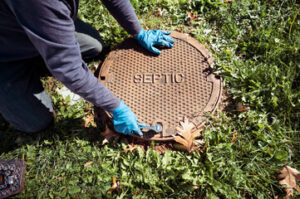Whether your car has minor dents or serious collision damage, an auto body shop can restore it. But what exactly does an auto body technician do?
The first step in the repair process involves meticulous preparation. Once this is complete, the paint job can begin. The technician uses several techniques to shape and blend the paint, providing a durable, quality finish. Contact Juanito’s Auto Body now!

The frame outlines the structure of your vehicle, supports its components, and ensures its overall safety. It is essential to your car’s performance, and if it sustains damage, it requires professional repair to preserve the vehicle’s safety and resale value.
Frame damage can occur in a variety of ways. Some of the most common include:
Collisions: The force of a collision can bend or twist the frame, leading to compromised structural integrity. Poor Driving Conditions: Continuous exposure to rough, uneven, or poorly maintained roads can cause the frame to experience jolts over time.
Crumple Zones: Located in the front and rear of your vehicle, these zones are designed to absorb kinetic energy by folding or crumpling during an accident, protecting passengers. If these zones are damaged, it may impact your vehicle’s performance and increase the risk of injury to occupants.
When assessing your vehicle’s frame damage, auto body technicians use advanced tools to thoroughly inspect and evaluate the damage. This includes visual inspection, alignment checks, and detailed measurements. They then create a plan to repair the damage and return the vehicle to pre-accident condition.
The frame of your car can be repaired using a technique called “frame straightening.” This process utilizes hydraulic pressure and pulling systems to return the vehicle’s frame to its original shape with precision. The damaged sections of the frame are cut off and replaced with new metal pieces that are welded in place.
In rare cases, some portions of the vehicle’s frame may be deemed unrepairable and require replacement. These sections are removed and replaced with new frames, ensuring that the resulting car is structurally sound and safe to drive.
Painting and Refinishing
After frame and mechanical repairs are complete, auto body repair technicians apply new paint to refinish the repaired surface. They use specialized equipment like spray guns, and learn skills such as color matching, blending, and clear coat application. These techniques help make the vehicle look as good as it did before the accident.
Before painting, the technician will clean the repaired area to remove any contaminants and smooth out rust or old paint. They may also sand the area to create an even surface for paint adhesion. They then apply an undercoat, which improves the adhesion of the topcoat and seals the repaired area. Once that is dry, the bodywork is painted with a base coat, which matches the original color, and then a clear coat is applied to protect the finish.
A good eye for detail is crucial for an auto body technician, as small imperfections will be obvious to a trained professional. They have excellent hand-eye coordination and dexterity, which allows them to handle tools with precision. This is especially important when working on the fine details of a car’s exterior, such as reshaping a panel or repairing a tiny scratch.
During this process, the technician will also be exposed to a variety of chemicals and physical hazards. These include volatile organics from paints, fillers, and solvents; hexavalent chromium and polyisocyanates from spray painting operations; silica from sanding; metal fumes from welding and cutting; and noise. They must also wear protective clothing and gloves. If these safety precautions are not taken, the worker could experience respiratory problems or skin irritations. If these issues persist, the technician must seek medical attention immediately. This will ensure that the injuries are properly addressed and the worker can return to work.
Reassembly
A skilled technician will carefully reshape and realign the damaged frame or unibody structure, ensuring the safety and proper function of the vehicle. This step is known as structural repair, and it’s one of the most critical aspects of an effective auto body repair shop.
Structural repair may require additional disassembly to gain access to difficult-to-reach areas of the vehicle, and it’s often necessary for frame straightening. This process can take days, if not weeks, depending on the extent of the damage. During this phase, technicians use laser frame diagnostic systems and other tools to ensure the accuracy of their work, and that your car will be returned to its original shape.
Once the frame and structural repairs are complete, reassembly can begin. This is one of the most time-consuming and tedious parts of the repair process, and it requires a large number of technicians working together to complete it. Technicians will reinstall all removed parts and components, recheck the alignment of all mechanical components, and re-test the airbags and other safety features.
The final phase of reassembly is the quality control inspection, which is designed to ensure that all repairs meet industry and manufacturer standards. Ideally, this step will be performed by the same technician who performed the initial disassembly and assessment, but this is not always possible due to the needs of a modern auto body shop. The quality control inspection will also involve checking that all paintwork is of high quality and that all panels and components fit correctly.
There are many nuances to the auto body repair process, and it’s important to understand all of these steps in order to get an accurate idea of how long your vehicle will be in the shop and what to expect from your collision repair. By learning more about the auto body repair process, you can prepare yourself for what to expect from your Seattle or Bellevue shop and set realistic expectations about how long it will take to restore your car.
Quality Control
Quality control is a critical process used by organizations to ensure that products and services meet specific requirements and standards. It involves examining and testing products to identify any defects or errors and taking corrective actions to resolve them.
A comprehensive auto body shop uses a multi-step inspection process to verify the integrity of all repairs, resulting in a vehicle that is as good as new. Look for shops that prioritize transparent communication and customer education, and that are able to explain technical terms and industry jargon in an easy-to-understand way.
When evaluating an auto repair shop’s quality of work, consider whether they offer warranties on their repairs. A warranty shows that the shop is confident in the quality of their workmanship and is willing to stand behind it. It is also important to assess a shop’s collaboration with insurance companies and ability to navigate the claim process efficiently.
General manufacturing quality control focuses on identifying and rectifying any defects in manufactured goods. It involves examining raw materials, production processes, and finished products to ensure they meet set standards. The goal is to catch any issues and correct them before the goods reach customers. This is important to reduce costs, maintain customer satisfaction, and build a positive reputation.
A quality assurance system is a vital tool for ensuring the consistency of products or services, and can be used in both manufacturing and service industries. It is important to have a clear idea of what the quality standards are for your business, and to set testing methods to help you achieve them. Quality control also involves reviewing test results to detect patterns or problems. This data can then be analyzed to determine what improvements need to be made and how to implement them.
Final Inspection
After the repairs are completed, your vehicle will undergo a final inspection. This step is very important and verifies that all work done on the vehicle was successful. It also ensures that the car meets the auto body shop’s high quality standards. If everything is in order, the vehicle can then be released to the customer. It’s important to take this time to inspect the work carefully and ask any questions you have about the repair process.
Reputable shops utilize thorough inspection processes that accurately assess the condition of a vehicle. They also employ advanced diagnostic tools that help identify hidden damages and other underlying issues. When searching for an auto body shop, look for one that provides detailed inspection reports and clear communication with their customers.
Whether they’re working with metal or paint, an experienced auto body technician has a keen eye for detail. They understand that even the smallest flaws can detract from a vehicle’s appearance and functionality, so they meticulously examine every inch of the repaired car before it leaves the shop.
Auto body technicians must also have excellent hand-eye coordination and manual dexterity to handle their various tools. They use these skills to delicately reshape and restore damaged components, ensuring that they are as good as new. Moreover, they need to be patient and precise in their work because it can take a long time to perform a flawless repair job. In addition, they must possess the necessary leadership skills to manage their employees and the overall body shop operations. This involves forecasting goals and objectives, establishing production schedules, monitoring accounts receivables, and ensuring compliance with regulatory standards. They also play a role in preparing and administering budgets and establishing employee pay rates.
